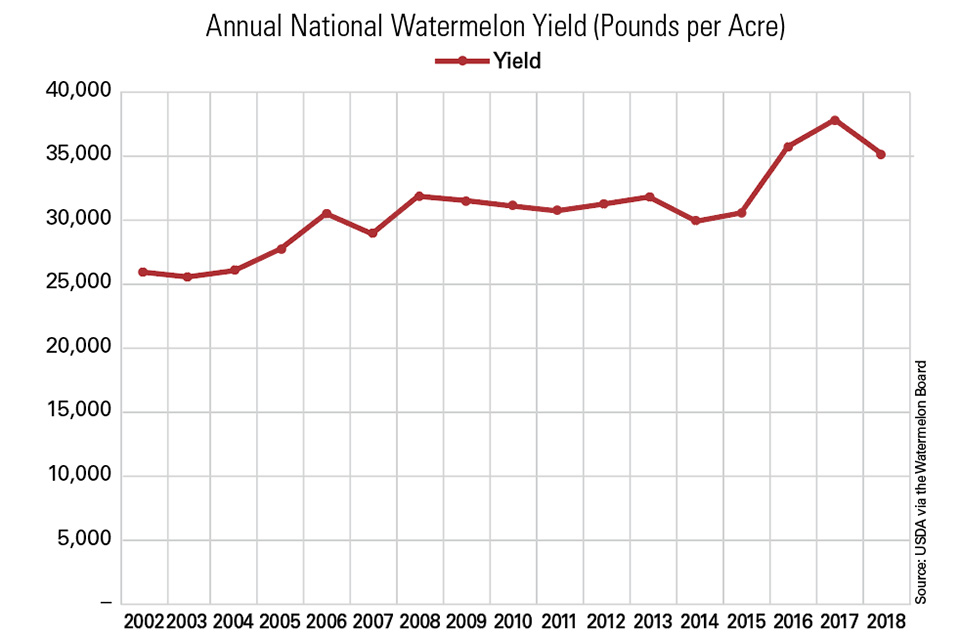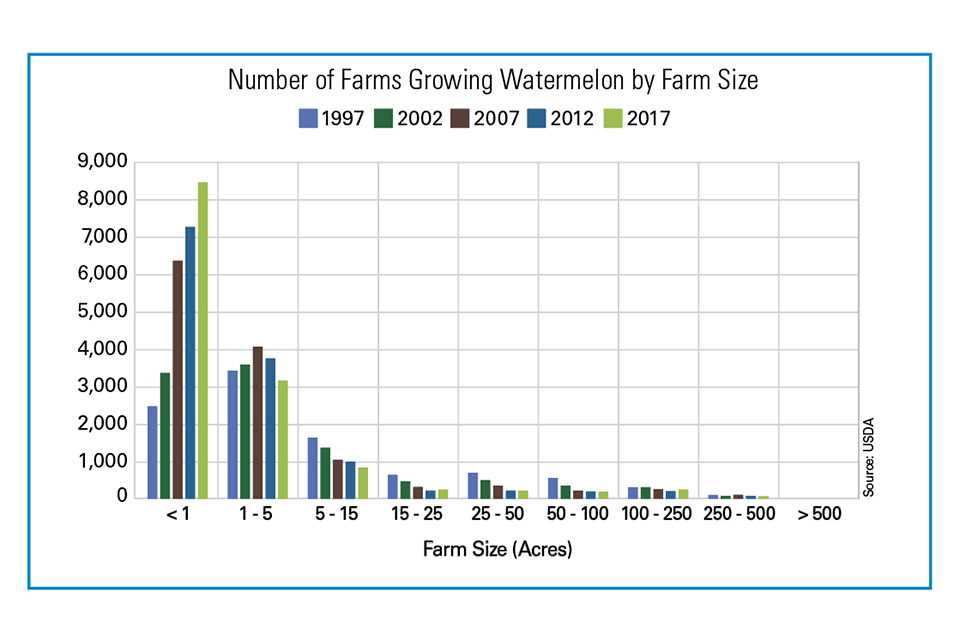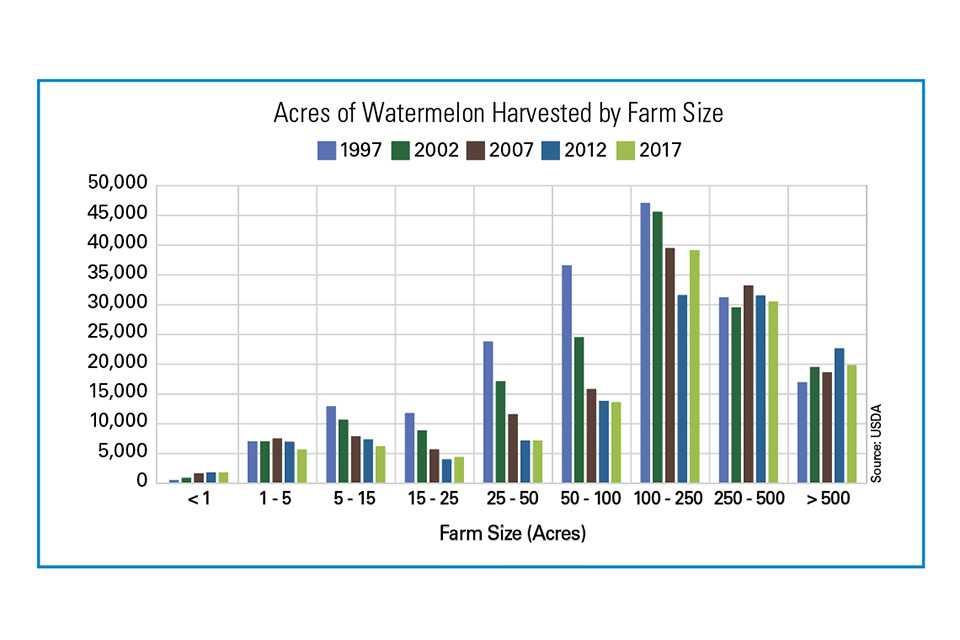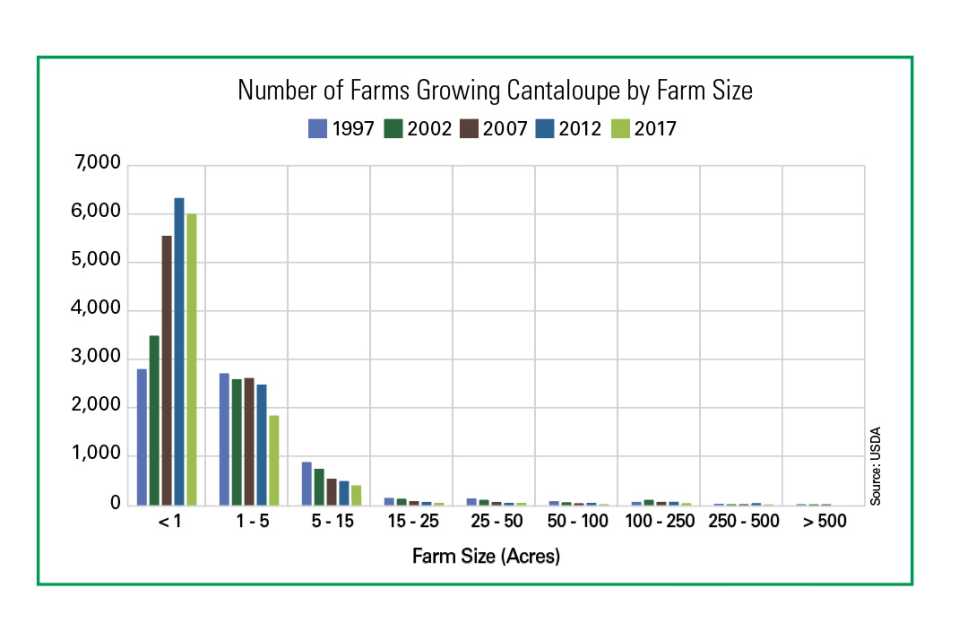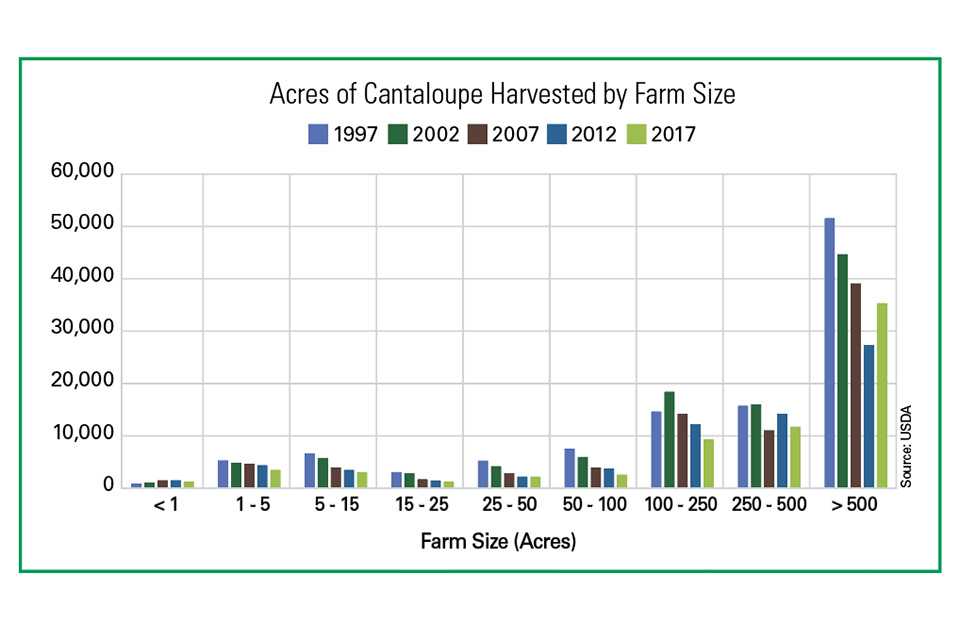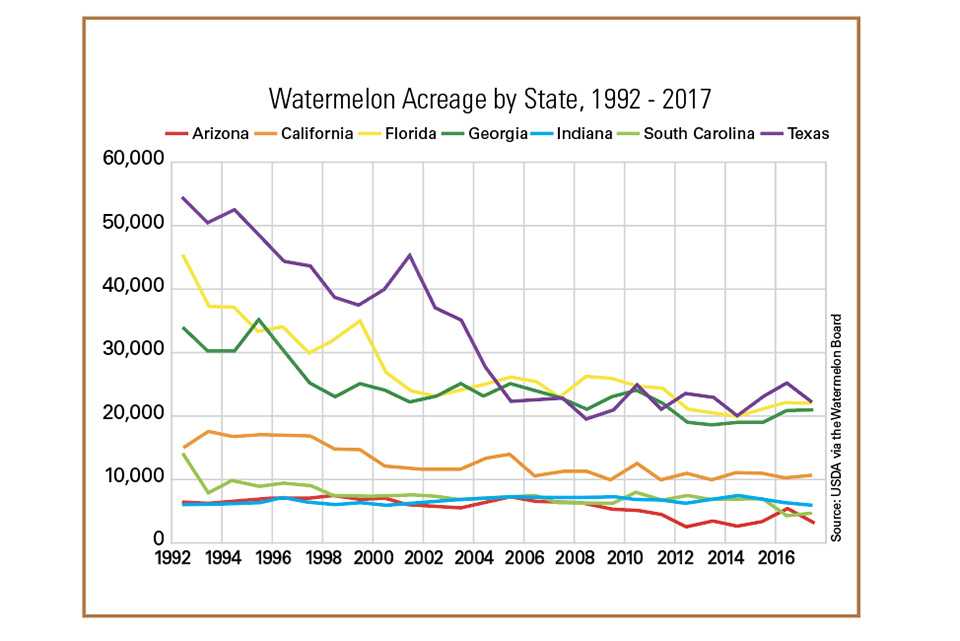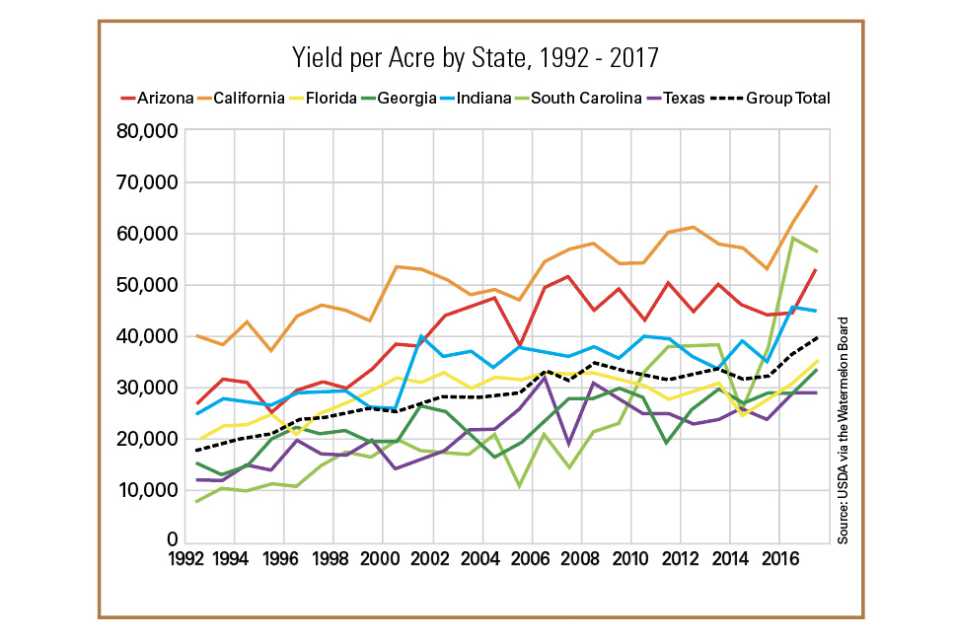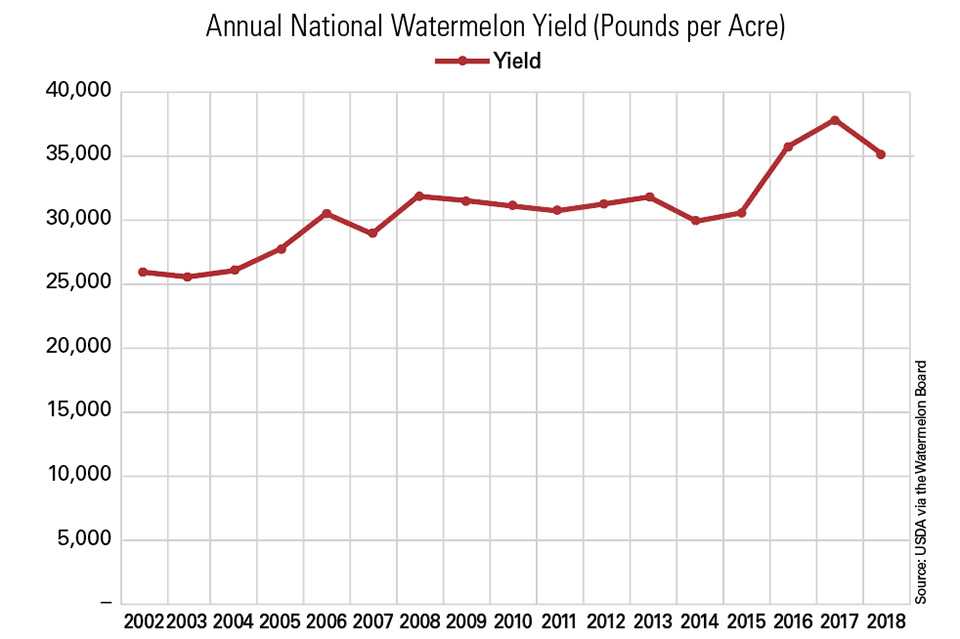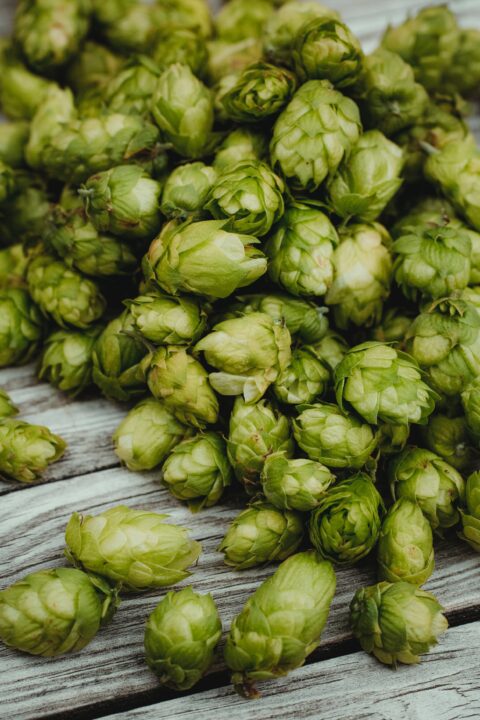Why Are There Fewer Farms but More Melons?
A lot has happened in the melon industry since 2002. With a shift in farming methods spurred by improved technology, larger farms command more of the overall industry.
“Dry farming used to be more prevalent, but with tighter margins, it’s risky if the rains don’t fall at critical points in the growing stage,” says Mark Arney, the Watermelon Board’s Executive Director. “So you are seeing more irrigation, from pivot to overhead, drip and fertigation (more recently), and less dry farming.”
Yields are critical, Arney says.
“They can make the difference between profit and loss, especially now with the cost of inputs steadily increasing,” he says.
Take a look at the following key statistics to see how this is playing out in the U.S.
A Watermelon Farm’s Size Has a Big Impact
These two charts demonstrate this dynamic effectively. Note that they’re mirror images of one another. The first, which shows watermelon’s number of acres harvested, skews strongly to large farms. The second, the number of farms growing watermelon, skews heavily to small farms.

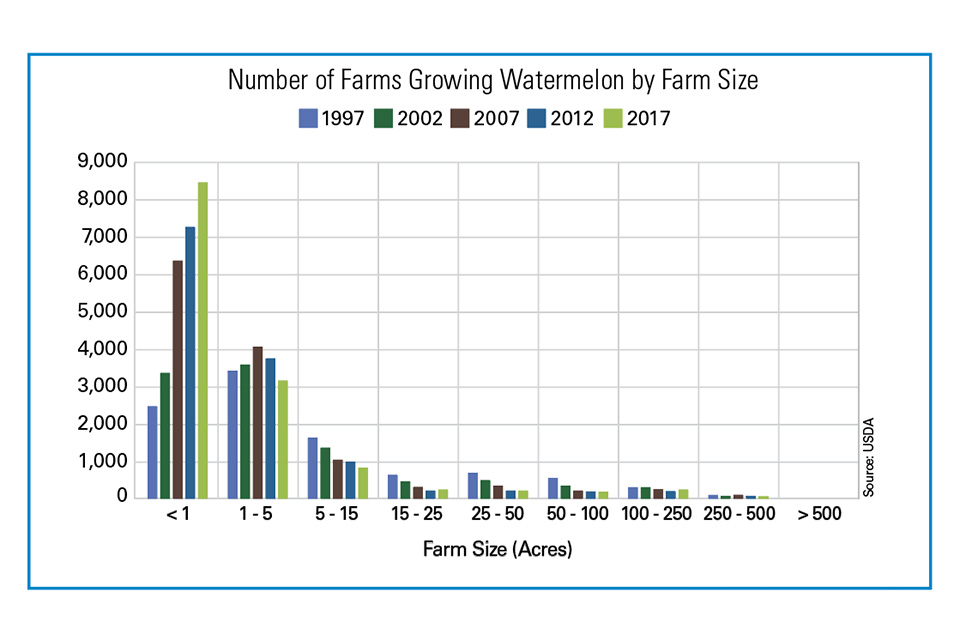 That tells the Watermelon Board’s Industry Affairs Associate Jason Hanselman that “ultra-small farms are unlikely to be contributing to a commercial crop.”
That tells the Watermelon Board’s Industry Affairs Associate Jason Hanselman that “ultra-small farms are unlikely to be contributing to a commercial crop.”
Take a closer look at the chart highlighting the number of farms growing watermelon. In the first category, farms with more than an acre, the number of farms has exploded since 1997, more than tripling.
It doubled in a five-year period, between 2002 and 2007, and it just kept increasing from there.
Hanselman has a theory about why that’s happening.
“I think a large driver of this is people having home gardens, and likely more of this group being captured by more accessible survey platforms. Like anything, there are many reasons but these two stand out to me as likely contributors,” he says.
The farms in the middle of these two graphs are the more important story here, Hanselman says.
“[This] is where you see the squeeze. As increased input costs (due to better yields) make ever larger farms the path to profitability, costs can be spread around more and strong markets can be better leveraged if and when they arise,” he says.
Cantaloupe Farms Tell the Same Story
You’ll find a similar story being told with cantaloupe growers. However, large cantaloupe growers are even more dominant.
The number of acres harvested by larger farms (those with 500 acres or more) is roughly equal to all other farm sizes combined. That’s even more remarkable when you realize it is the smallest category of farms. In fact, there are 200 times more farms with less than an acre growing cantaloupe than there are farms with more than 500 acres.
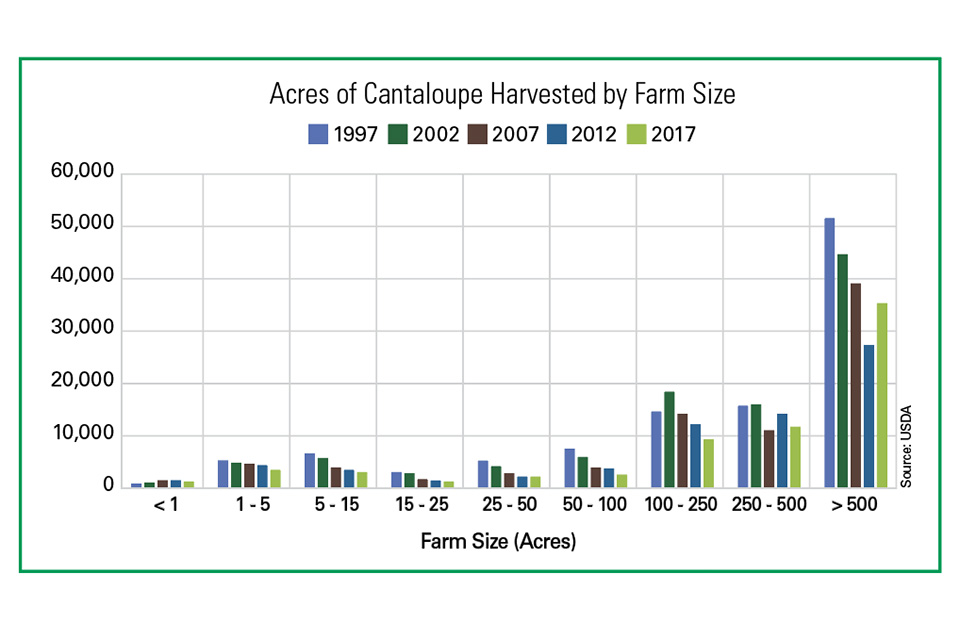
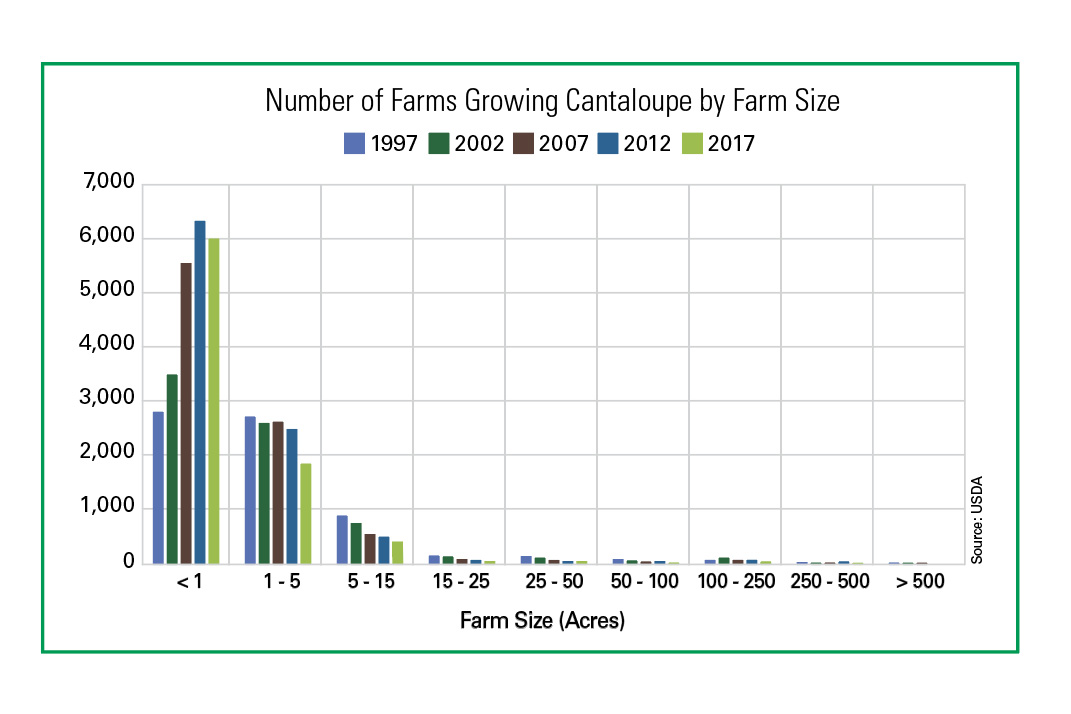
What Story Do State Level Stats Tell?
Hanselman says these yield trends vary widely by state.
“We can see the average yield basically doubling in the past 25 years, with every major production region seeing improvement in pounds per acre,” he says.
But at the same time, most of these states have shed roughly half of their acreage since 1992.
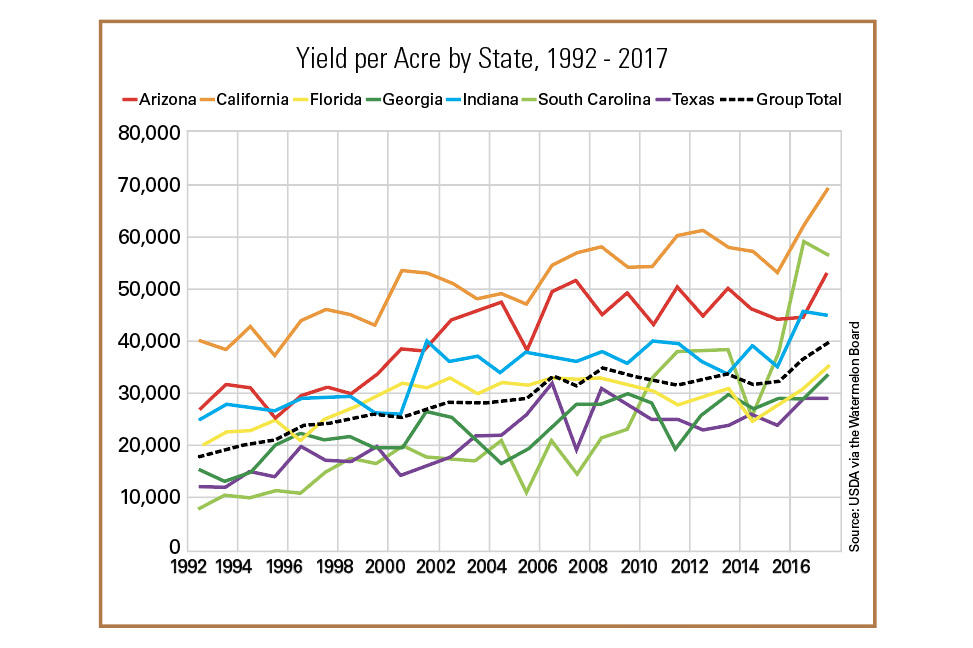
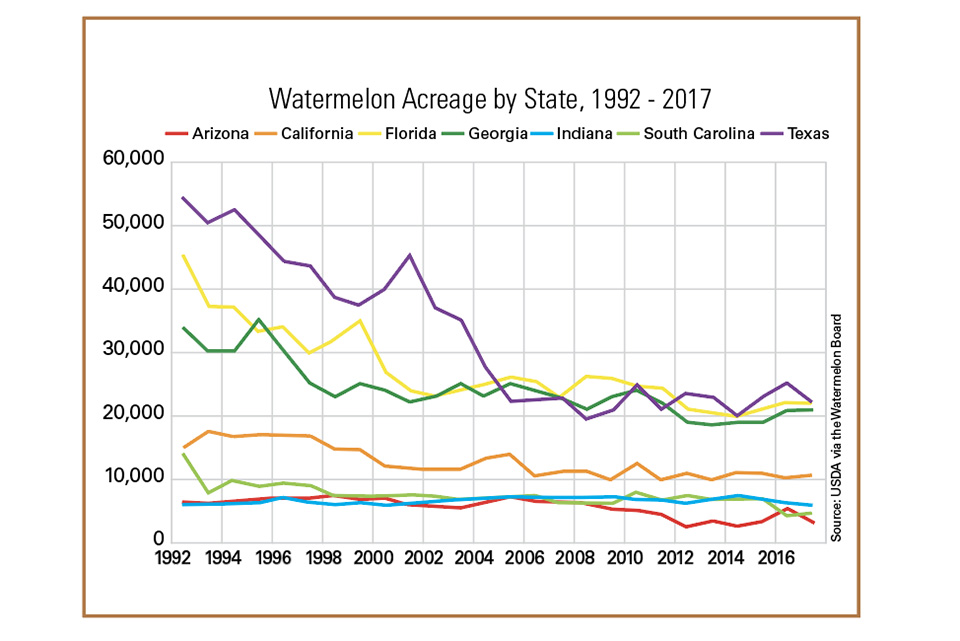 Hanselman points out the main falloff came about the time the industry changed its production methods.
Hanselman points out the main falloff came about the time the industry changed its production methods.
“This aligns with industry practices shifting from heavy dry-farming of seeded and seedless watermelon to modern fertigation processes focusing specifically on seedless varieties,” he says.
Pounds Per Acre Stats Summarize the Trend
Two main trends have led to more melons growing on fewer acres, Arney and Hanselman say. The first is more advanced tools.
“Technology is also driving this trend as more disease- and insect-resistant watermelon varieties, coupled with integrated pest management, produce better yields with better quality and less fruit left in the fields,” Arney says.
Seedless watermelon breeding is the second key factor.
“For a long time, seedless required seeded to be planted about every fourth row for pollination. Now we have seen the industry shift to nonbearing pollinators,” Arney says.
There are fewer acres but better yield. Hanselman provides a chart, pulling data from USDA National Agricultural Statistics Service, to illustrate this point.
“[It] shows a 35% increase in yield per acre from 2002 to 2018,” he says. “And that end year was a bit of a step back from 2017 when the gap was 46%.”
